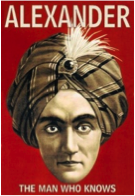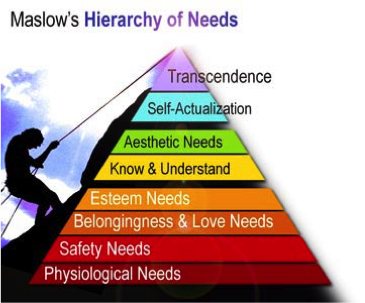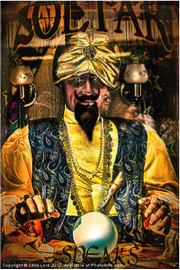Tips from a Consultant: Using Maslow to understand the Needs of your client.
"Anyone in marketing knows that the one constant within any marketing team, whether internal teams, clients, vendors, etc., is ego."
 Recently, I was reminded of Puff the Magic Dragon. Wow, that seems random, eh? Yes, yes it does. I was pondering over a series of exchanges with all sorts of internal partners, vendors and clients - everyone vying for their piece of the pie. I envisioned a few puffing themselves up, blowing smoke up you know what and some just shooting fire daggers in my general direction. Sounds cutthroat doesn’t it? It really isn’t at all, not in some Mad Men golden age of advertising way. It’s just email marketing.
Recently, I was reminded of Puff the Magic Dragon. Wow, that seems random, eh? Yes, yes it does. I was pondering over a series of exchanges with all sorts of internal partners, vendors and clients - everyone vying for their piece of the pie. I envisioned a few puffing themselves up, blowing smoke up you know what and some just shooting fire daggers in my general direction. Sounds cutthroat doesn’t it? It really isn’t at all, not in some Mad Men golden age of advertising way. It’s just email marketing.
Anyone in marketing knows that the one constant within any marketing team, whether internal teams, clients, vendors, etc., is ego. Yup, I let the proverbial cat out of the bag that everyone dances around – ego. There’s sometimes so much ego flying about that it’s difficult to discern what’s puffery and what’s good marketing. A knowledgeable marketer knows how to cut through the smoke and move the mirrors (don’t break the mirrors though - no one needs bad luck!) However, whether the smoke is blown from the C Suite, immediate upper management, clients or vendors, it might be discernible, but how exactly to waft through it and arrive at an open airspace?
At least half, perhaps more, of my success as an email strategist is not the knowledge and experience I’ve accumulated in email marketing – it’s my ability to read people and assess their needs very quickly. As a consultant, I need to be able to provide the best solutions to my clients, but also, deliver the most actionable options. What this really means is that I have to understand all the players involved – my internal business partners, clients and their business partners, client management, client company goals and my own company’s goals - all of these are factors to the solutions provided. The players transcend the services side of email and are the same whether you’re an agency, vendor, or you’re the client. We must contend with multitudinous personalities (read “egos”) in order to reach, or exceed, business goals.
 So, how do you learn to “read” people? No, you don’t need to be a mind reader and it’s easier than you may think. When I completed my undergraduate degree as an adult, I had some great advisors in the marketing industry that encouraged me to heavily incorporate psychology into my curriculum. After all, marketing is based on understanding behavior and motivations, so it made perfect sense.
So, how do you learn to “read” people? No, you don’t need to be a mind reader and it’s easier than you may think. When I completed my undergraduate degree as an adult, I had some great advisors in the marketing industry that encouraged me to heavily incorporate psychology into my curriculum. After all, marketing is based on understanding behavior and motivations, so it made perfect sense.
 Through this approach, I learned a great deal about Maslow’s Hierarchy of Needs. Understanding people’s needs helps you to understand their motivations. Knowing how someone is motivated, allows you to provide the best marketing plan to meet and exceed your goals. So, how does this help you clear the smoke? Understanding needs and motivations helps you understand your business partners, clients, vendors, coworkers – any and all relationships - better.
Through this approach, I learned a great deal about Maslow’s Hierarchy of Needs. Understanding people’s needs helps you to understand their motivations. Knowing how someone is motivated, allows you to provide the best marketing plan to meet and exceed your goals. So, how does this help you clear the smoke? Understanding needs and motivations helps you understand your business partners, clients, vendors, coworkers – any and all relationships - better.
To illustrate this methodology, let’s look at a more subtle case study with “George”. George is 30-something, client side email manager, married with a toddler-age daughter whom he will talk about every chance he gets, but the business at hand always comes first. George has only been in his role for about a year and previously had no digital experience at all. In fact, he wasn’t previously in the marketing department and has been with his company for over 10 years. George is a typical client-side manager example. Things we can glean from this bit of information which would commonly come about in a first meeting are:
- George has met the first 4 needs at the base of Maslow’s Hierarchy above as he has a home, appears well nourished, speaks fondly of his wife and family and seems secure in his position.
- Know + Understand is about where he falls. He’s not fully confident in his position and has loads to learn, but willing to do so.
- George is in his role due to being faithful to his company, not for a passion for the email channel.
- He doesn’t know much about how the digital world works, but he’s motivated to learn because he’s committed to his job and company.
- He doesn’t work long hours as his family is important to him, but responds as needed to communications.
- George is a regular Joe, not a GI Joe.
From the above points, I know I shouldn’t assume George knows what I’m talking about and to be explanatory when discussing metrics, strategy and technology with him. At the same time, it’s important not to “talk down” but to educate. To convey the importance of a new strategy or testing concept to George, he needs to be excited about the opportunity; thus, I need to convey that the opportunity is for him to shine and provide substantial results. To do so, he needs to see new opportunities clearly as his opportunities. George will get the by-in needed if he feels something will move the needle and take him to the next level of his career, allowing him to continue to provide for and grow his family.
This example exemplifies that everyone has ego, whether it’s the puffed-up variety of the egoist or simply, Average Joe George who wants to succeed in his lifelong career with Company X. The same methodology applies when dealing with Egoist SVP Z - understanding what makes their ego puff up is how to get support.
 It is vital tonot confuse this methodology with kiss-assery. When you know what makes someone tick, i.e. what makes them want to blow smoke, puff up like a blowfish and climb the proverbial ladder, you’ll know how to approach them, provide feedback and/or solutions and essentially, how to balance their needs with your goals. No mind reading involved, but I totally encourage the purchase of a crystal ball – when colleagues and clients alike are impressed by your insight and forethought, no need to tell your secrets – keep the mystery alive!
It is vital tonot confuse this methodology with kiss-assery. When you know what makes someone tick, i.e. what makes them want to blow smoke, puff up like a blowfish and climb the proverbial ladder, you’ll know how to approach them, provide feedback and/or solutions and essentially, how to balance their needs with your goals. No mind reading involved, but I totally encourage the purchase of a crystal ball – when colleagues and clients alike are impressed by your insight and forethought, no need to tell your secrets – keep the mystery alive!

 How to resolve AdBlock issue?
How to resolve AdBlock issue? 